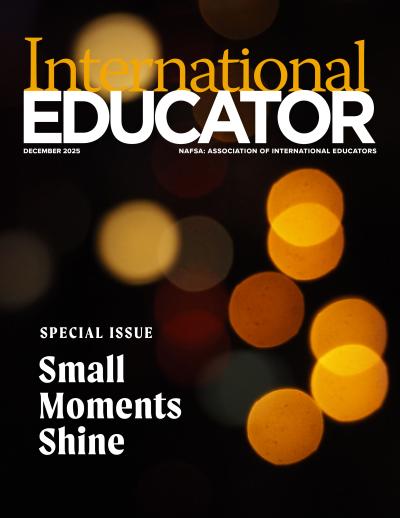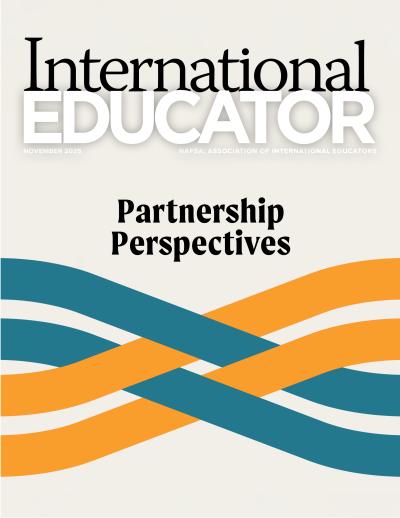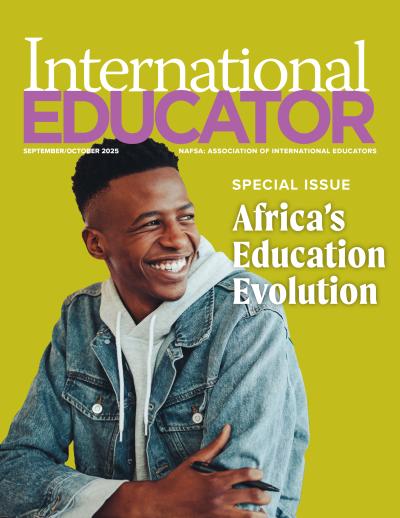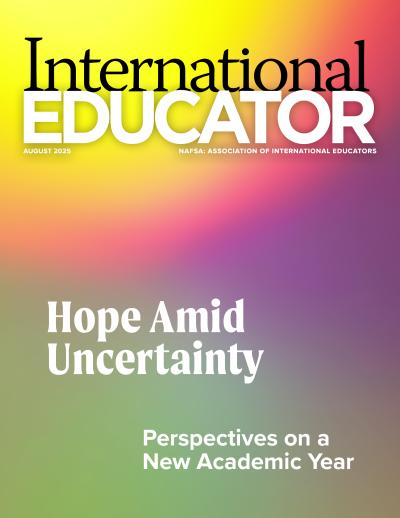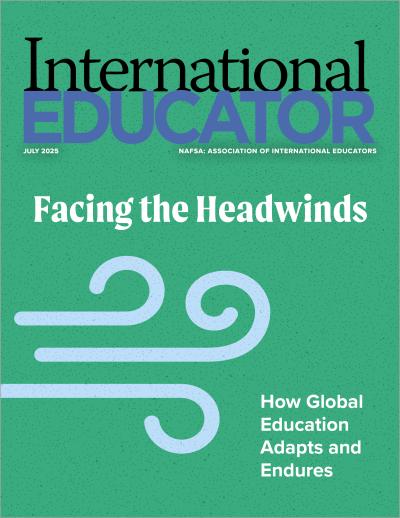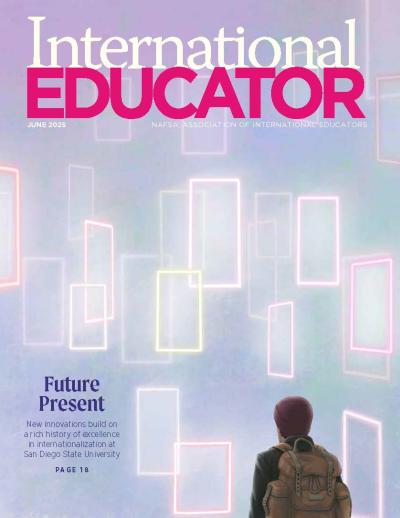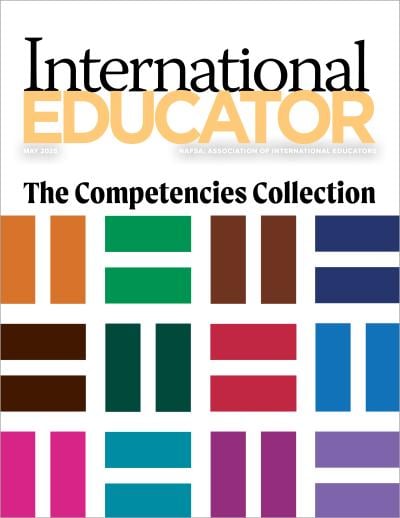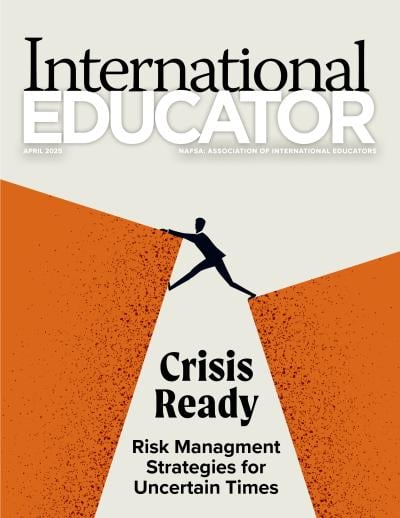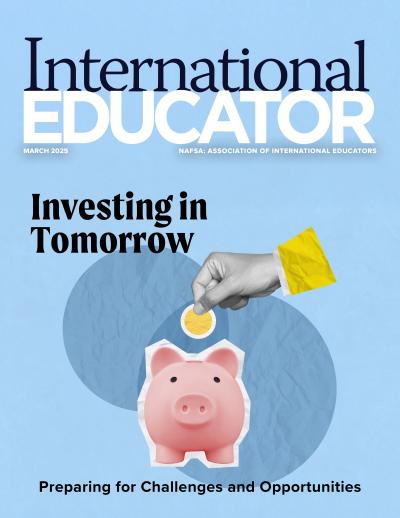Rewriting the Playbook

As campuses across the United States and around the world awaken with the energy of a new academic year, we find ourselves at a familiar threshold—and yet, one that feels markedly different. The start of a semester is always a moment of promise: new students, new classes, new goals. But this year, it also presents a powerful opportunity for reflection, resetting, and realignment. For those of us working in international education, this season of new beginnings is a chance not only to welcome students back—but also to rethink how we serve them in a rapidly changing global context.
In July, NAFSA hosted a timely and well-attended webinar, “Rewrite the Playbook: Strategies for International Enrollment in the Midst of Uncertainties in the U.S.” More than 500 international educators joined us, a clear signal that our field understands the urgency of reimagining the path forward. The challenges we face are significant—visa delays, shifting regulations, geopolitical uncertainties—but so too is the resolve to innovate not at the margins, but at the core.
As we begin this new semester, let us ask ourselves the hard questions: What is our institution’s appetite for change? Are we willing to move beyond comfort and toward innovation? Are we prepared to be bold when the moment demands it?
What emerged from that dialogue was a resounding call to move beyond temporary fixes and toward bold, strategic redesigns. If we are to thrive, we must do more than adjust—we must reorient. Below are some key reflections and recommendations that surfaced during the conversation, ones I believe are critical in guiding our work as this new semester unfolds.
Internal Alignment Is Foundational
First and foremost, success in this space demands internal engagement. Institutions must ensure all stakeholders—from admissions officers to faculty, student affairs leaders to senior administrators—are aligned in purpose and action. Everyone needs to be on the same bus, moving in the same direction.
Too often, international education is viewed as an auxiliary function. But when we silo our efforts, we limit our impact. The work of internationalization must be understood as central to institutional mission and strategy. This means intentionally coordinating across departments and adopting a systems approach to our practices. Fragmentation is the enemy of innovation.
Policies, Practices, and Procedures Must Evolve
Second, we must be willing to interrogate and, when needed, change the very policies and procedures that shape the student experience. Are our admissions timelines flexible enough for today’s visa realities? Are we making space for hybrid pathways or pre-arrival onboarding that supports students before they even reach our campuses?
These are not cosmetic adjustments; they’re structural shifts. It’s time to challenge assumptions, uproot outdated norms, and replace rigidity with responsiveness.
Internationalization as Our North Star
At the heart of all this must be a guiding vision: internationalization as a driving force, not an afterthought. It must be the North Star that anchors our decisions, strategies, and resource allocation. Institutions that keep this vision at the forefront are better positioned to weather uncertainty—and to lead with purpose.
But vision alone is not enough. We must pair it with consistency. Internationalization is not a faucet to be turned on and off depending on global conditions or internal budgets. It requires long-term commitment, embedded strategy, and the courage to make international engagement integral to every student’s academic journey.
Agility, Partnership, and Student-Centeredness
Agility and entrepreneurship are no longer optional: they are required. The institutions that will lead in this new era are those that can pivot when needed, try new approaches, and stay student-centered in all they do. This means being willing to pilot new models, partner creatively, and learn from both success and failure.
One of the most powerful tools at our disposal is partnership. The institutions showcased during the webinar are investing in transnational education models, activating their international campuses, and leveraging alumni and global networks in new ways. They’re leaning into their overseas relationships and co-creating solutions across borders. These examples remind us that we don’t have to do this alone.
But perhaps most importantly, we must center the experiences and outcomes of international students themselves. Their journeys are shaped by every policy we set and every interaction we offer. Keeping their voices, needs, and aspirations at the heart of our work is good practice and a moral imperative.
Moving Forward with Courage and Clarity
As we begin this new semester, let us ask ourselves the hard questions: What is our institution’s appetite for change? Are we willing to move beyond comfort and toward innovation? Are we prepared to be bold when the moment demands it?
The status quo simply will not suffice. Each institution must look inward and chart its own path—one rooted in context, purpose, and a willingness to lead. The playbook is ours to rewrite. Let us do so with courage, collaboration, and a renewed commitment to the transformative power of international education.
To all who are beginning anew this semester—whether students arriving on campus for the first time, colleagues taking on new roles, or institutions embarking on bold strategies—I wish you a beginning grounded in hope. May this season be one of strategic clarity, transformational partnerships, and whole-of-community engagement. In a world of complexity, let us find strength in purpose, possibility in challenge, and inspiration in one another. •
About International Educator
International Educator is NAFSA’s flagship publication and has been published continually since 1990. As a record of the association and the field of international education, IE includes articles on a variety of topics, trends, and issues facing NAFSA members and their work.
From in-depth features to interviews with thought leaders and columns tailored to NAFSA’s knowledge communities, IE provides must-read context and analysis to those working around the globe to advance international education and exchange.
About NAFSA
NAFSA: Association of International Educators is the world's largest nonprofit association dedicated to international education and exchange. NAFSA serves the needs of more than 10,000 members and international educators worldwide at more than 3,500 institutions, in over 150 countries.
NAFSA membership provides you with unmatched access to best-in-class programs, critical updates, and resources to professionalize your practice. Members gain unrivaled opportunities to partner with experienced international education leaders.





